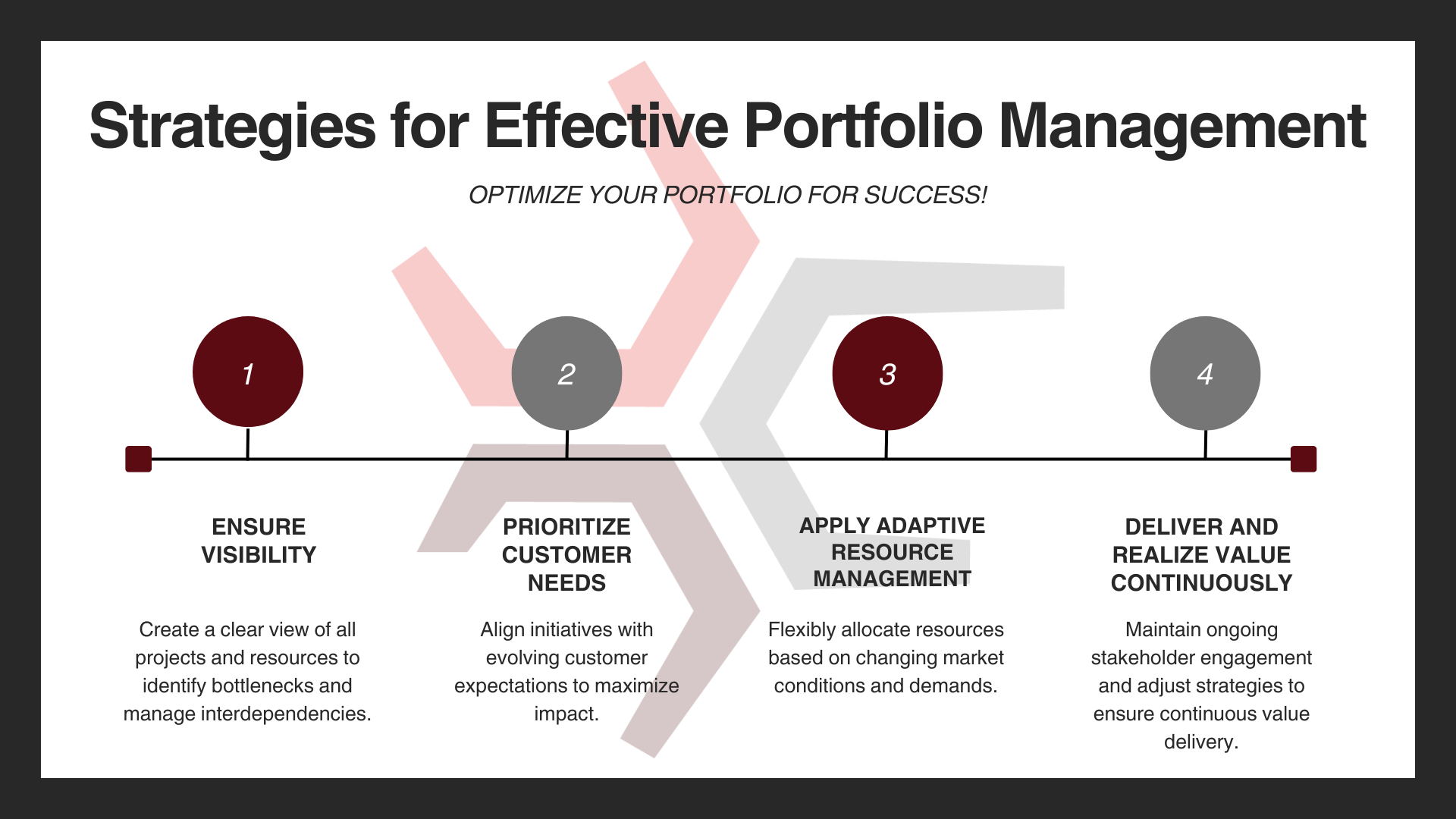What strategies do we recommend to ensure alignment and effective portfolio management?
In today’s fast-paced business environment, portfolio management has become more crucial than ever. Companies are juggling multiple initiatives, often across various departments and teams. Without proper alignment and management, these portfolios can quickly become siloed, leading to inefficiencies and missed opportunities. Here are six essential strategies to ensure alignment and effective portfolio management.

1. Ensure Visibility into Work and Constraints
One of the biggest challenges in portfolio management is the lack of visibility across different teams and projects. Siloed portfolios fail to provide a holistic view of the organization's performance, making it difficult to identify bottlenecks or constraints. To improve performance, it's essential to break down these silos and create an environment where there's clear visibility into who is doing what, and what is being delivered when. This insight allows portfolio leaders to identify interdependencies, manage risks proactively, and allocate resources more effectively.
2. Prioritize Around Customers’ Expectations
In the digital age, customer expectations are continually evolving. This shift demands that organizations prioritize initiatives that directly align with customer objectives. Without a customer-centric prioritization approach, companies risk investing in initiatives that do not deliver the desired impact. It’s important to define who your internal and external customers are and understand their needs and expectations. Establishing an investment committee with cross-functional stakeholders can help ensure that the most valuable ideas are prioritized, aligning resources with strategic goals and customer needs.
3. Apply Adaptive Resource Management
The increasing complexity of today’s business landscape, characterized by agile methodologies and hybrid project approaches, requires a more adaptive approach to resource management. Rather than rigidly sticking to predefined plans, organizations need to be flexible, reallocating resources based on market shifts and changing customer demands. This involves recognizing interdependent risks, negotiating competing priorities, and ensuring strategic coordination across groups. An adaptive approach enables teams to respond quickly to changes, optimizing value delivery across the portfolio.
4. Deliver Value Continuously
In portfolio management, delivering value is not a one-time event but an ongoing process. Continuous engagement with sponsors and stakeholders is essential to ensure that the portfolio remains relevant and continues to deliver on its promises. This requires a change-enabled culture where feedback loops are established, and communication channels are open across all levels of the organization. By engaging change champions and securing executive buy-in, organizations can navigate change more effectively, ensuring that value is continuously delivered.
5. Realize Benefits Continuously
As digital business models evolve, the need for continuous measurement and realization of benefits becomes critical. Organizations must move away from viewing benefits as a one-time gain and instead see them as incremental units of value delivered over time. Having a dedicated owner to track the realization of these benefits helps organizations make informed decisions, revisit assumptions, and adjust strategies as needed. This continuous learning process enables better portfolio management and ensures that the organization remains agile and responsive to change.
6. Foster an Agile Organizational Culture
Agility is key to effective portfolio management. It’s about building a culture and processes that are both nimble and versatile, allowing the organization to quickly adapt to internal and external changes. Portfolio management should be seen as an enabler of strategic change, with the ability to make frequent adjustments based on real-time data and feedback. By fostering an agile culture, organizations can ensure that their portfolio management processes are aligned with their strategic goals, driving long-term success.
Conclusion
Effective portfolio management requires a strategic approach that aligns initiatives with organizational goals, customer needs, and market dynamics. By ensuring visibility, prioritizing customer-centric initiatives, applying adaptive resource management, delivering continuous value, realizing benefits incrementally, and fostering an agile culture, organizations can optimize their portfolios for success. These practices not only improve performance but also ensure that the organization is well-positioned to respond to future challenges and opportunities.
Need more information or guidance?
Contact our expert team today: contact [at] sophistex.com